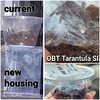Dorifto
He who moists xD
- Joined
- Aug 10, 2017
- Messages
- 2,779
And on topI've looked and ran my fingers along bottom, no openings. Yes yes will check again when I get home from work.
2 rows at bottom and rear bottom leave the front clean. Gotit
Great info to clean up holes really appreciate it.
I'm on it.













